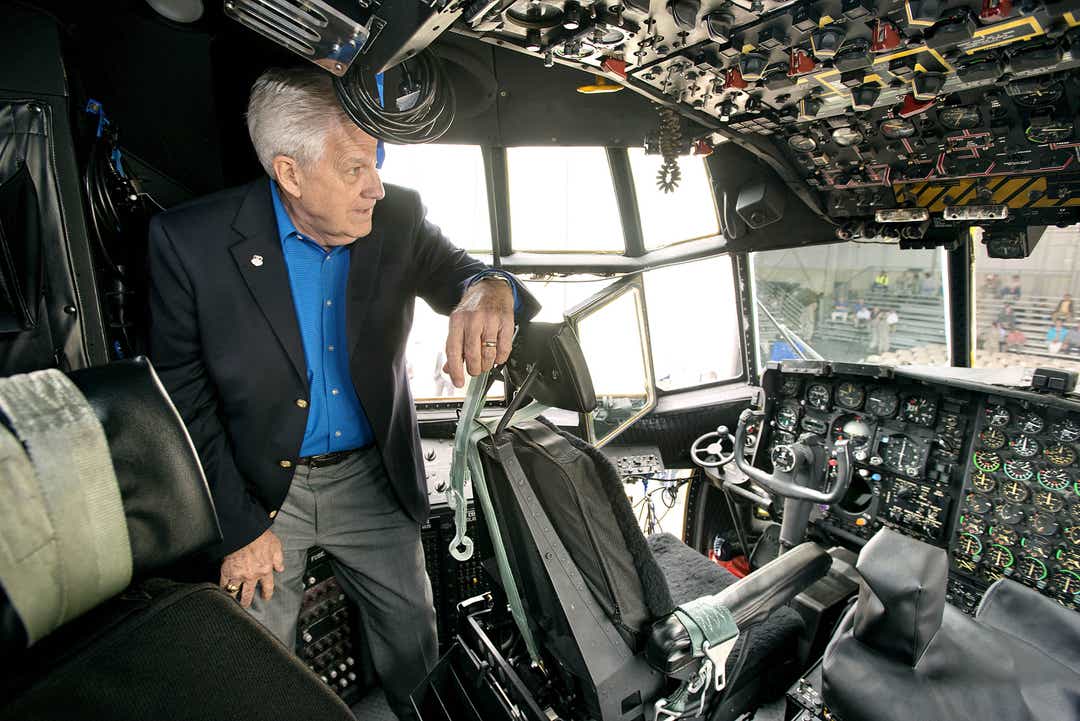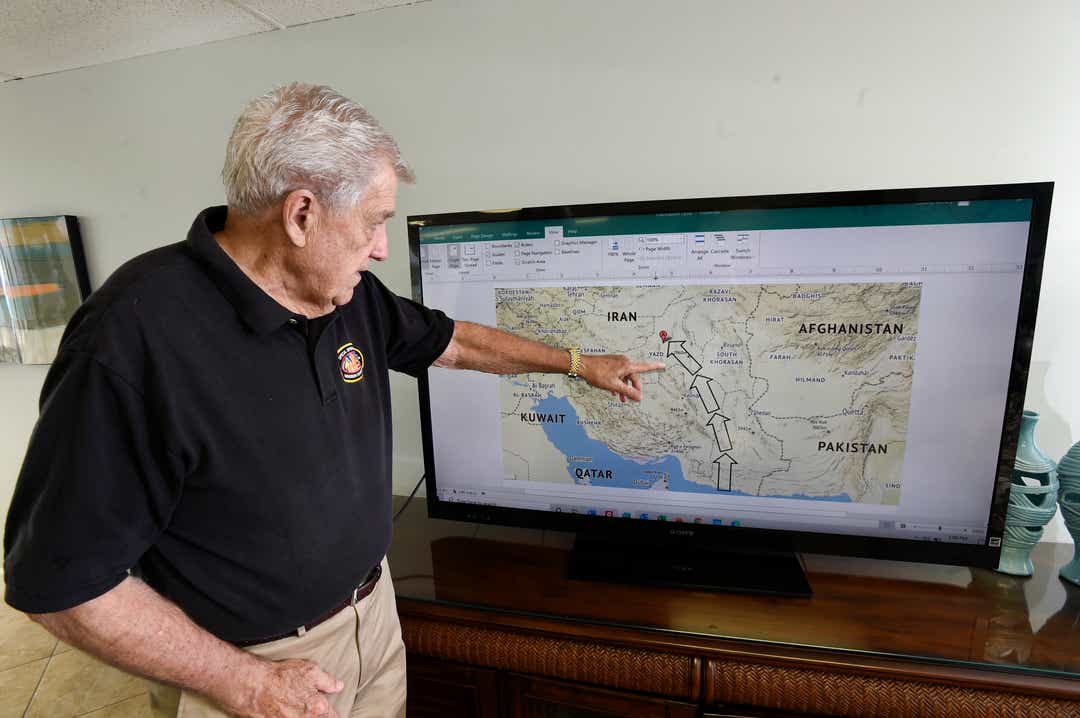After two previous unsuccessful attempts, there is now a documentary film called "Desert One" that tells the story of Operation Eagle Claw, the unsuccessful 1980 attempt to rescue 52 American hostages from the U.S. Embassy in Tehran.
The failed raid claimed the lives of eight American military personnel, including five members of the 8th Special Operations Squadron at Hurlburt Field.
More (April 2019): Hurlburt Field commemorates failed 1980 Iran hostage rescue mission
"This was a roller-coaster ride of a story well worth telling, with important moments about American leadership and gumption and relations with Iran and courage in the face of adversity," said "Desert One" director and two-time Academy Award winner Barbara Kopple.
Kopple went on to say that she believes the firlm "could help inspire us in our troubled times. We need a lot of inspiration right now, and I hope a lot of people see this movie."
Among its other revelations, "Desert One" features never-before-heard tapes of President Jimmy Carter talking with military commanders in real time as the rescue mission fell apart, and includes an interview with Carter, whose presidency was haunted by the hostage crisis.
The April 24, 1980, rescue mission came six months after young Iranian revolutionaries seized the embassy. The hostages were released shortly after noon on Jan. 20, 1981, moments after Ronald Reagan was sworn in as the new U.S. president.

"Desert One" is available "virtual cinema." Anyone interested in seeing the documentary can go online to desertonemovie.com, click on "Get Tickets" and choose from among any of the cities listed where the documentary is available, whether or not they live in the immediate area. For a charge of $9.99, a link to the movie will be sent to the purchaser, for viewing on electronic devices or, with the required connections, on home television screens.
A portion of the proceeds for rentals of "Desert One" will go to the theaters offering it for virtual viewing, according to Jim Norton, who operates Pensacola Cinema Art, one of the theaters through which virtual viewing is being offered. That revenue is helpful to theaters whose business continues to be curtailed by the ongoing COVID-19 pandemic, Norton explained.
Among the people interviewed for the documentary is retired Air Force Col. Roland Guidry. A prominent voice among those involved in Operation Eagle Claw, Guidry had been approached twice before, by different organizations, about the possibility of making a documentary. For whatever reasons, Guidry said, neither of those attempts came to fruition.
Now living in Destin, Guidry was the commander of four of the six C-130 aircraft, one of which he piloted, involved in the refueling of helicopters participating in the mission at Desert One, the name given to the refueling site in the Iranian desert where the mission ended.

Of the eight helicopters that began the April 24, 1980, mission, only six made it to Desert One, after two were forced out — one by a sandstorm, and the second by a defective rotor blade. Six helicopters had been determined in advance to be enough to continue with the mission — getting Delta Force soldiers close to Tehran to get into the embassy and get the hostages out — but on the ground at Desert One, a hydraulics problem with one of the helicopters reduced the number of available and adequately working helicopters to five, forcing the call to abort the mission.
As the aircraft and personnel were leaving Desert One, amid poor visibility, one of the helicopters hit one of the C-130s, starting a massive fire and ordnance explosions that claimed the eight lives. "Desert One" includes some particularly graphic images of the failed raid, including photos and film of some of the charred bodies of the dead, and Iranians celebrating over the bodies. Also featured in the documentary are artist renditions depicting personnel struggling to escape the flames.

Because the fire was so intense, and because of the need to evacuate the site quickly, the personnel remaining alive at Desert One could not wait for the flames to subside to recover the bodies.
"We made the best of a bad situation by getting everybody out who was alive," Guidry said in an interview this week.
Personnel involved in the mission have, like Guidry, been somewhat reluctant to talk about it over the intervening years. But last year, during one of the regular remembrances of Operation Eagle Claw at Hurlburt Field, Richard "Taco" Sanchez, at the time an Air Force staff sergeant serving aboard one of the C-130s involved in the mission, said simply, “Things happen, and you lose eight guys.”

But Sanchez went on to note last year that the mission did set the stage for a resurgence of Special Operations.
“We know that we’re the forefathers of what we have now,” he said.
While the mission did fail, Guidry said, "it has proven prophetic" in detailing the importance of equipping and training Special Operations personnel. After the Vietnam War, Guidry said, Special Operations were given little priority and paltry budgetary support. Support was so limited, in fact, that one of the helicopters used in Operation Eagle Claw was a minesweeping aircraft that had to be gutted and reconfigured for the rescue mission.
Operation Eagle Claw, Guidry said, "triggered the rebuilding of Special Operations," the wisdom of which can be seen in missions such as the May 2, 2011, raid on a Pakistan compound that resulted in the death of Islamic terrorist Osama bin Laden and interdiction against Somali pirates.
In fact, according to Guidry, the increased focus on Special Operations in the U.S. military has meant that today, Special Operations personnel are "doing the same thing we did in Iran almost nightly."
And, as also noted in the documentary, Operation Eagle Claw has another enduring legacy.

In the wake of the tragedy, the surviving personnel committed to providing for the college education of the 17 children who lost their fathers at Desert One. That effort has grown to become the Special Operations Warrior Foundation, which has provided not only academic funding, but academic counseling, private tutoring, college planning, mentoring and college-to-career transition assistance to more than 1,000 sons and daughters of fallen Special Operations personnel.
tinyurlis.gdu.nuclck.ruulvis.netshrtco.de
مقالات مشابه
- شرکت صادرات و واردات کالاهای مختلف از جمله کاشی و سرامیک و ارائه دهنده خدمات ترانزیت و بارگیری دریایی و ریلی و ترخیص کالا برای کشورهای مختلف از جمله روسیه و کشورهای حوزه cis و سایر نقاط جهان - بازرگانی علی قانعی
- زوم Miscaptioned: Haggis کارگردانی شده از ترس
- شرکت صادرات و واردات کالاهای مختلف از جمله کاشی و سرامیک و ارائه دهنده خدمات ترانزیت و بارگیری دریایی و ریلی و ترخیص کالا برای کشورهای مختلف از جمله روسیه و کشورهای حوزه cis و سایر نقاط جهان - بازرگانی علی قانعی
- 3 روش برای اینکه سینی نشا خود را آسانتر
- شرکت صادرات و واردات کالاهای مختلف از جمله کاشی و سرامیک و ارائه دهنده خدمات ترانزیت و بارگیری دریایی و ریلی و ترخیص کالا برای کشورهای مختلف از جمله روسیه و کشورهای حوزه cis و سایر نقاط جهان - بازرگانی علی قانعی
- ECSO: کوکائین و تقلب در کارت اعتباری تجهیزات در داخل تیراندازی قربانی صفحه اصلی
- تجهیزات و ابزارهای آزمایشگاهی شیشه آلات آزمایشگاهی
- استخدام برای نرتهویو را Jayden جکسون ایجاد خروس بزرگ, مهارت, نوع دوستانه طبیعت
- بهترین hip-hop/rap آلبوم از سه ماهه 2 سال 2020 (آوریل تا ژوئن)
- گرمسیری سیستم نزدیک شدن به خلیج مکزیک ممکن است به افسردگی گرمسیری در روز بعد و یا دو